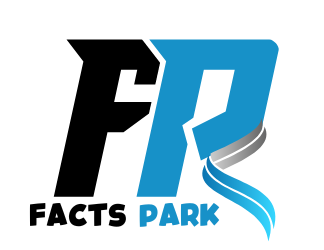The Turnitin AI checker plays a critical role and sets new standards for academic integrity. The rise of AI-generated content has reshaped academic landscapes and raised new concerns about originality and plagiarism. For institutions and students, it’s now essential to have advanced tools to ensure authenticity in assignments and research. By identifying AI-assisted writing and detecting potentially plagiarized content, Turnitin AI checker is quickly becoming an essential tool for educators worldwide.
What is the Turnitin AI Checker?
Turnitin has long been synonymous with plagiarism detection, helping educators and institutions safeguard academic honesty. Recently, Turnitin has taken a step further by integrating AI capabilities into its checker. The Turnitin AI checker is designed to spot traditional plagiarism and detection of content generated or heavily influenced by AI tools, such as ChatGPT or other language models. It makes a comprehensive solution in today’s AI-driven era, where students have access to advanced tools that could compromise the originality of their work.
How Does the Turnitin AI Checker Work?
The Turnitin AI checker analyzes textual content using a combination of natural language processing (NLP), machine learning, and sophisticated algorithms. This enables it to detect subtle patterns and indicators characteristic of AI-generated content. Unlike traditional plagiarism checks that compare text to a database of existing sources, the Turnitin AI checker assesses style, coherence, and structural patterns, identifying signs of machine-generated language.
Key Features of the Turnitin AI Checker
- AI Detection
The core functionality is to recognize and flag AI-generated text. Turnitin’s AI checker can discern between human-written and AI-generated content with high-demand accuracy. - Plagiarism Detection
It offers the same high-quality plagiarism checking that Turnitin is known for, covering a vast database of academic work, publications, and online sources.
- Detailed Reports
After each scan, the Turnitin AI checker provides a detailed report highlighting areas where AI or non-original content may be present, making it easier for instructors to evaluate authenticity.
Why Is Turnitin AI Checker Essential in Modern Academia?
The use of AI in academia is expanding rapidly, with tools that can generate essays, solve complex problems, and even simulate human writing styles. While these tools can support learning, they also introduce challenges for academic integrity. The Turnitin AI checker helps ensure that students produce their work, preserving the core values of education.
- Promoting Academic Honesty
With access to AI tools, the temptation to cut corners is higher than ever. The Turnitin AI checker discourages such practices by identifying AI-generated submissions, fostering a culture of honesty.
- Supporting Teachers and Institutions
For educators, manually assessing originality is increasingly difficult. The Turnitin AI checker saves time and provides reliable insights, ensuring fairness in grading and evaluation.
- Empowering Students
Students are likelier to engage in the learning process and develop authentic skills when they understand that AI content can be detected easily. The Turnitin AI checker encourages students to produce work that reflects their abilities.
How Effective Is the Turnitin AI Checker in Detecting AI Content?
It can identify AI-generated text but complex scenarios such as hybrid content where AI-generated text can occasionally slip through. However, as Turnitin continues to improve its algorithms, the checker is expected to handle even these nuanced cases more effectively. Additionally, Turnitin’s large data sets and continuous AI advancements allow it to stay ahead of trends in content creation, ensuring that detection capabilities evolve in parallel with AI tools.
Benefits of Using Turnitin AI Checker for Educators
The Turnitin AI checker has quickly become a valuable asset for educators. Its ability to distinguish between genuine student work and AI-generated content offers significant benefits:
- Improved Efficiency
Teachers no longer need to manually assignments for apprehensive patterns. The Turnitin AI checker highlights potential issues in seconds.
-
Enhanced Academic Standards
With effective AI detection, educational institutions can uphold academic integrity, ensuring that grades and certifications absolutely reflect student knowledge and efforts.
- Consistency in Grading
By identifying AI-assisted writing, educators can apply uniform grading standards, providing fair assessments across the board.
- The Student Perspective
For students, the Turnitin AI checker can seem like a double-edged sword. While it reinforces the importance of originality, some students may feel that it limits their creative freedom. However, many students recognize that AI tools should complement their learning, not replace it. By creating assignments that reflect their understanding, students gain more from the educational process and build skills that will serve them well beyond academia.
Moreover, relying heavily on AI can hinder the development of critical thinking and analytical skills.
Ethical Implications of AI Detection in Academy
The adoption of AI checkers raises some ethical questions. Should students be penalized for using AI as a learning aid? At what point does AI assistance become academic dishonesty? The Turnitin AI checker helps to draw a line by detecting over-reliance on AI while allowing educators to make case-by-case judgments. This balance ensures that tool is support academic standards without stifling innovation or legitimate AI-supported learning methods.
Tips for Students: How to Avoid AI Detection
Students who genuinely wish to avoid AI detection, the best advice is straightforward: rely on personal effort and creativity. Here are some tips for maintaining originality:
- Use AI Tools Sparingly
If you use AI for brainstorming, ensure that your final output is re-phrased, expanded upon, and authentically reflects your own voice.
- Cite Your Sources
If AI helped you gather information, you cite any content or data that isn’t common knowledge.
- Engage with the Assignment
The more effort you invest in understanding the topic, the less you’ll need to rely on external tools.
Future of AI Detection: What’s Next for Turnitin?
The Turnitin AI checker is expected to evolve as AI-generated content becomes more practical. Turnitin is enhancing its machine learning models to improve detection accuracy and stay ahead of AI developments. Future updates may include features like real-time feedback for students, which would grant them to check their work before submission. This proactive approach could transform the Turnitin AI checker from a detection tool into a learning aid, encouraging students to create original work from the start.
Frequently Asked Questions
- How accurate is the Turnitin AI checker in spotting AI content?
Turnitin AI checker is highly accurate, although it can miss some hybrid content that mixes human and AI input. With continuous updates, Turnitin is working to refine this accuracy further.
- Can the Turnitin AI checker detect all types of AI tools?
Turnitin’s AI checker can detect content generated by popular AI tools like ChatGPT, but as new tools emerge, Turnitin is constantly updating its algorithms to cover a broader range of AI-generated content.
- Is Turnitin AI checker only for detecting AI content?
No, it also provides traditional plagiarism detection, making it a versatile tool for AI-generated and plagiarized content.
Conclusion
The Turnitin AI checker is more than just a tool; it’s a step forward in preserving academic integrity in a world where technology is advancing rapidly. By encouraging students to produce authentic work and supporting educators in maintaining high academic standards, the Turnitin AI checker plays a vital role in shaping the future of education. As AI continues to evolve, so will the measures that ensure integrity, making tools like the Turnitin AI checker indispensable.
In this new era of AI, Turnitin AI checker stands as a guardian of honesty, helping students, educators, and institutions build a culture of authenticity in learning.



